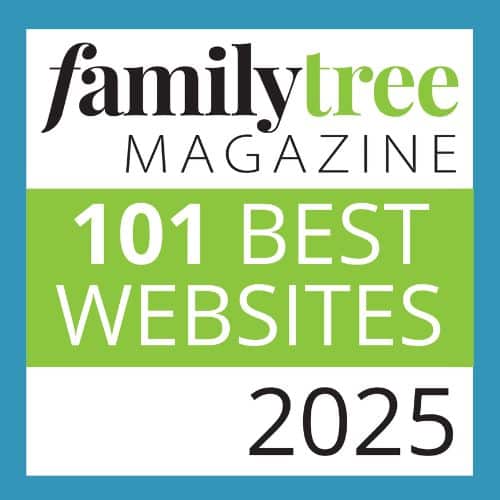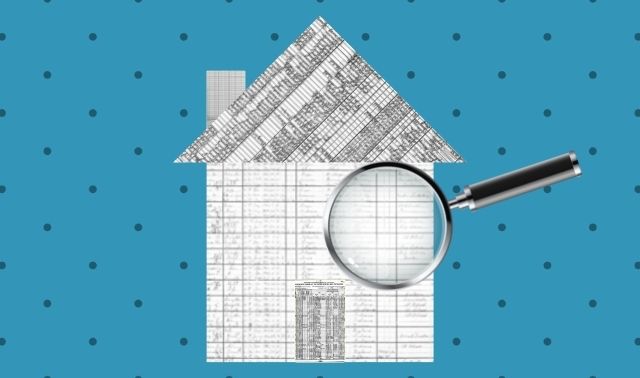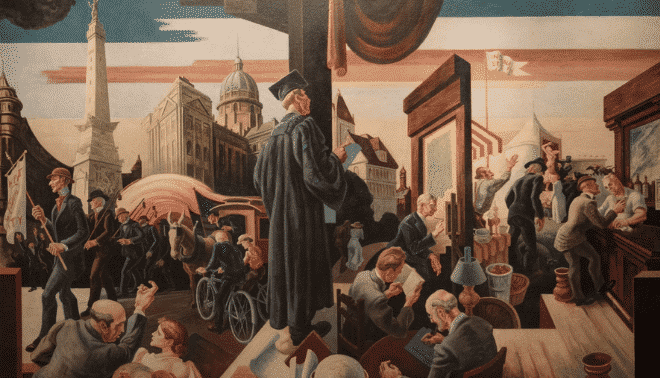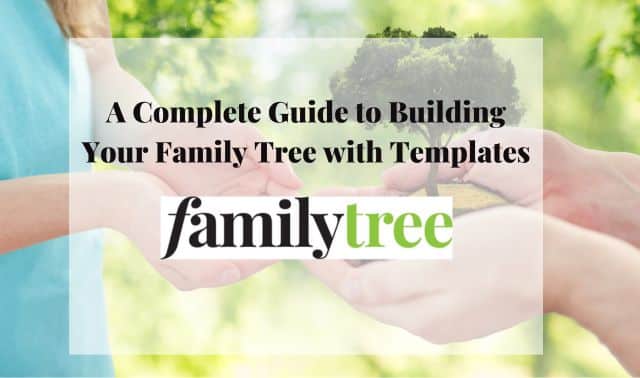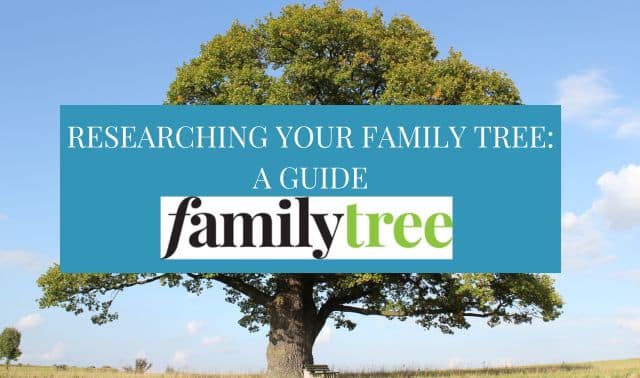Sign up for the Family Tree Newsletter! Plus, you’ll receive our 10 Essential Genealogy Research Forms PDF as a special thank you.
Get Your Free Genealogy Forms
"*" indicates required fields

Thanks to online databases and millions of digitized records, today’s breed of genealogist has instant resources at hand to search from the comfort of home. And the research is quick and simple—if your ancestors’ names are indexed and recorded exactly the way you expect them to be spelled, your ancestors are documented in the records where you expect them to be, AND all your forebears left detailed records in logical locations.
Keep dreaming.
These obstacles, of course, aren’t really new to online searching. Researchers had these same dilemmas years ago when hunting down ancestors on microfilm, in books and in original records.
Sometimes the key to solving a genealogy mystery is getting back to basics. When you run up against a genealogy brick wall, try these nine old-school tricks to break through. You’ll find that not only can old dogs learn new tricks, but dogs both old and young will benefit from practicing these time-tested strategies!
1. Designate time for critical thinking.
Begin with a little quiet time to get your critical-thinking brain cells firing, and then review your research. Critical thinking is an objective analysis of a topic and the use of logical judgment. Here’s a step-by-step look at the process.
- Identify a problem. How can I prove that my ancestor Samuel was born in 1852, as that undocumented online family tree says?
- Determine a course for solving the problem. What records might help me establish Samuel’s birth in 1852? Are records available online? Will I have to seek records offline?
- Gather evidence from the records. Because an 1852 birth date predates statewide vital registration, I’ll likely need to check several alternate sources that typically contain birth or age information, such as censuses, Bible records, tombstones, death certificates, church records, military service records and so forth. Seek as many records as that ancestor might have created.
- Analyze and evaluate each source’s accuracy and reliability. For example, who created the record? For what purpose was the record created? Who provided the information on the record? Would that person have direct knowledge of the information on the record? Would that person have a reason to lie?
- Make reasonable assumptions based on the analysis of all the evidence. Don’t rely on isolated individual records.
- Draw a sound, logical conclusion. Base this on the evidence, common sense, and the records and ancestors in their historical context. We old dogs like sitting and being quiet; we often figure out strategies to solve genealogical dilemmas this way.
2. Be patient.
I had identified potential parents for Cornelius Casey; I found them on a ship’s passenger list, departing from Ireland in 1850 and arriving at the Port of New York. The problem: Cornelius wasn’t born until about 1852 in New York (I didn’t know whether it was the city or the state), so the dilemma was determining if and how Cornelius was linked to the couple on the immigration record. Cornelius’s 1936 death certificate, which I’d ordered by mail, had given me Irish-born parents named C.C. Casey and Johanna Haley. On the passenger list, I found a Cornelius Casey, age 28, his wife Johanna, age 24, and an infant son, Thomas. Listed right after them on the manifest was a family with the surname Healey. The timing of the immigration fit, as did a family of Healeys, but I couldn’t be sure that “C.C.” Casey on the death certificate was the Cornelius Casey on the manifest. So I looked online in the 1860 census for the Caseys in New York, both city and state, where the son Cornelius would be listed with his parents, so that I could prove the link.
There were no matches, so I tried the 1870 census. While I found some matching names, none of the other information, such as ages and places of birth, matched what I knew about the family from other records. Of course, like printed indexes, online databases aren’t perfect. You’re at the mercy of the indexer.
I could have searched the census page by page the old-fashioned way on microfilm (or online). But New York City’s five boroughs—Manhattan, Brooklyn, Queens, Staten Island and the Bronx—housed 805,658 residents in 1860; 942,292 people lived there 10 years later. For Manhattan alone in 1860, I’d have to scour each handwritten page featuring 40 names on the 34 fat rolls of census microfilm. This task would take many uninteresting weeks and might not prove fruitful if the family hadn’t been counted for some reason.
How would you prove the connection? Keep in mind that it’s too early for vital registration of births in New York City. The Casey family was most likely Catholic, given they were Famine Irish, so I decided to look for a baptism. But which parish in New York City? In the city directories for the early 1850s, I found a list of the Catholic churches of that era. By doing an online search for each church, I determined that 17 are still in operation today. None of their baptismal records are accessible online or on FamilySearch microfilm, so I wrote an old-fashioned letter to each parish, hoping one had a baptismal certificate on file for the son Cornelius Casey. Then I crossed my paws and waited.
I couldn’t have done this kind of request by email. To get a response, all 17 requests needed to be accompanied by a donation of between $10 and $25 (one church asked for $50 to do a search) and a self-addressed, stamped envelope. This letter-writing campaign, though more time-consuming when waiting for responses, was actually more economical than hiring a researcher in New York City, paying her hourly rate and transportation costs to visit each parish, plus making the required donation for the search. (Many parishes don’t allow public access to original baptismal registers, anyway; only the priest or parish secretary can perform the search.)
About 10 days later, I began receiving responses. Several had no baptisms that matched. One sent me a baptism for a Cornelius Casey born 20 years later to other parents. Then I opened a return envelope from St. Columba Church and pulled out the 1852 baptismal certificate for Cornelius Casey. He was indeed the son of Cornelius Casey and Johanna Healy. The sponsors were James Healy (a name from the passenger list) and Catherine Healy. Crossing your paws does sometimes work.
3. Accept defeat (sometimes).
A client contacted me to locate his ancestor Elisabeth (Maurer) Haldemann, her adult children Elisabeth and Johannes Haldemann, and the senior Elisabeth’s grandchild Elise Haldemann on a passenger arrival list. Based on his research in Swiss documents, they almost certainly left together from Le Havre, probably in late May (when the senior Elisabeth sold her property) and arrived in New York in June 1890. But he could find no such grouping on passenger arrival lists for the time. I also couldn’t find any matches in the online databases.
For this research dilemma, I used both a printed reference guide and online sources. I consulted the Morton Allan Directory of European Passenger Steamship Arrivals (Genealogical Publishing Co.) to see what ships had departed from Le Havre and arrived at the Port of New York in May, June and July 1890. The French Line was the company with ships sailing from Le Havre to New York at the time. After making a list of the ships and their arrivals, I searched each passenger list online page by page for those three months, thinking that the names must have been mangled in the database. I looked at not only variations of the surname Haldemann, but I also looked at family groups, reading first names in case the last name had been unreadable. No matches.
Referring back to the Morton Allan Directory, I noticed that The French Line had sent passenger ships to New York weekly except in July 1890. There was a gap in the listing between July 7 and July 21. A ship should have arrived around July 14. Maybe that list hadn’t survived—and it happened to be the manifest the family was recorded on.
I did a search on the New York Times historical archive database for mid-July 1890 to see whether it mentioned a ship from Le Havre arriving then. Sure enough, the ship La Gascogne arrived at the port of New York from Le Havre July 14, even though it wasn’t mentioned in the Morton Allan Directory. I used Steve Morse’s One-Step search engine, as I found it was the best site for linking to ships without a passenger’s name, so that I could search the entire list. If La Gascogne wasn’t included there, that might mean that the list had been lost, or damaged and unreadable.
I was surprised to find the list; evidently, it had been overlooked when the Morton Allan Directory was compiled. I also was surprised to see how clear and beautiful the handwriting was—it would have been indexed without problems. I searched all eight pages of that list, but still had no luck locating the Haldemanns. I tried searching indexes to other ports for a span of years from 1820 to 1957. I searched Morse’s site, Ancestry.com and CastleGarden.org. Neither the client nor I could find them.
It’s possible the family was never recorded on a list. That seems unlikely, but many people can’t find their ancestors on passenger arrival lists. It makes me wonder how many people didn’t get recorded for one reason or another. Perhaps the Haldemanns purchased their ticket right before the ship was due to depart, so they didn’t get recorded on the manifest. Or they might have been on a ship’s list or page that didn’t survive or was so water-damaged that it didn’t get microfilmed. All we know with certainty from the other records is that they did come to America.
For this case, I had to put my head down and accept that not all genealogical puzzles can be solved.
4. Try all possible searches.
I knew she was there: Fanny Grigg of Greenwich, Conn., in the 1900 census. I’d found her years ago, long before censuses were available online, by checking for her in the Soundex (an index that groups similar-sounding names together) and then going to the microfilm, but I hadn’t made a photocopy of the enumeration page at that time. I wanted to recheck the census to identify her neighbors, but she wasn’t coming up in the online database, not under Fanny or Fannie or variants of Grigg. I tried Ancestry.com’s database and the FamilySearch.org database. It’s frustrating when you know the person is there, but you can’t locate where the bone is buried.
This is when you start doing “creative searching.” In my notes, I’d recorded Fanny’s birth year from the 1900 census, so I searched again on a Fanny/Fannie with the year 1852. Still nothing. When I can’t find someone by searching on a first and last name, I try another search with just the surname and other specific information. That worked. By searching on just the surname Grigg with the birth year 1852 and the place, Connecticut, it brought up Tanny B. Grigg, better known as Fanny. The person indexing the census had mistaken the F for a T.
Had I not known she was there, I might have given up, thinking she hadn’t been recorded. It makes you wonder how many of our ancestors’ bones are actually buried where we think they should be, but we can’t dig them up due to data-input errors.
5. Use cluster and collateral research
When the 1940 census was released, I was eager to find my parents, as this was the first census on which they’d be listed. Both lived in Westchester County, NY, my mom in Harrison, and my dad in Rye. I searched the census index for my dad first: Salvatore DeBartolo. When his name brought no results, I searched on his siblings and his widowed mother. Still nothing. Fortunately, I knew my great-grandfather had resided with them, so I searched on his name, Salvatore Ebetino, and found him. My dad, his siblings and his mother were all listed under the surname misspelling DeBarotolo. Had I not found Dad, though, I was prepared to search page by page, because I knew the family was there.
With my mother, I had the same problem. She should have been listed as Mary Fitzhugh. I couldn’t find her, her siblings or her parents. In fact, I couldn’t find any Fitzhughs in Harrison for 1940. Because the nation was still recovering from the Depression, some individuals combined resources and occupied the same household. If you’re having trouble finding someone in the 1940 census, and you know they lived with another family or person, search for that family.
That’s how I eventually found my mother. I knew the Fitzhughs shared a house with my mother’s aunt, uncle and their children, the McCues. Interestingly, on the census page, the census taker had recorded Fitzhugh initially for my mother, her parents and her siblings. But it looks like the enumerator had made mistakes when recording this household, became confused, crossed off Fitzhugh and labeled them all McCue.
This would have been another case requiring a page-by-page search if it hadn’t been a multifamily household. Instead, I was able to say hello to my parents in the 1940 census.
6. Use different record types together.
Tracing unmarried, divorced or widowed women is one of the biggest challenges genealogists face. I was searching for Margaret Dawson, a widowed midwife, in the 1850 census. I’d found her in New York City directories in the years before, during and after 1850, but I couldn’t find her in the census. I had scanty information about her: She would have been in her mid-50s in 1850, and she was born in England.
I found several Margaret Dawsons in New York City who fit the profile, but none had an occupation of midwife, so I couldn’t make a positive ID. In the city directories, my Margaret lived at 101 Sheriff St. The problem was the 1850 census for New York City didn’t list street names. Using enumeration district maps, I would be able to pinpoint the ward, but that was still a lot of page-by-page searching.
Fortunately, the 1851 New York City directory had a supplemental “criss-cross” or street directory in its volume. I looked up the street address to learn the names of Margaret’s neighbors. Once I identified them and then located them on the census, I could pinpoint nearby Margaret Dawson.
Old dogs know that if they can’t figure out which one is their ancestor, fetching and using records in combination with one another leads to a more successful search.
7. Study social history.
The focus of your search might be an individual ancestor, but you can’t isolate him or her from the context of family, community, and history and expect your searches to be successful. To find your ancestor’s origins, you might need to examine the neighbors who could’ve migrated from the same locality. To understand your ancestor’s behavior, you might need to study social history.
Social history is the history of ordinary folks and their everyday lifestyles. Unlike traditional history—usually about old, influential, famous, dead white men—social history looks at the poor, the middle class, women, children, ethnic and racial groups, and all the people in a society. By shaking hands with social history, you can understand why your ancestor traveled back and forth to the old country two or three times before he brought his family to America, or why you can’t find a naturalization record for him, or why a couple’s children appear to be baptized before they were born. Social histories explain trends of common people and give us the typical experiences of people like our ancestors.
8. Look for future record releases.
The day the 1930 census was released, professional genealogist James W. Warren, was at the National Archives in Washington, DC, hoping to find his father on that census. Jim knew the name of the Oklahoma county where his dad had told him they’d been living. His dad was 17 years old at the time of the census. Jim also knew the surname that his dad said the family had been using. Upon moving to Oklahoma, Jim’s grandpa had changed their last name to avoid arrest for bootlegging in Arkansas.
Only a few states had been indexed for the 1930 census at the time, and Oklahoma wasn’t one of them. Jim spent the better part of the day reading the census for the whole county, page by page and line by line, with no success in locating his dad’s family. He repeated the task a few months later, but still couldn’t find them. When computerized indexes became available on Ancestry.com, he checked those, too. No luck. Jim wasn’t sure whether his dad had given him an inaccurate surname or if his grandfather had managed to avoid the census taker, as well as the Feds. About two years ago, Jim checked the FamilySearch catalog for the Oklahoma county in question to see what new records had been added to the collection. He discovered that school censuses had been microfilmed. He read those for the county, again going line by line, looking for the first names and nicknames his dad and siblings had used. That’s when Jim found the family. Some of the children’s first names, or nicknames, and ages matched what he knew about the family. The surname also matched what his dad had told him.
From the school census records, Jim learned the township they lived in, so he searched the 1930 census for that township, again looking page by page. This time he found them, and he could see why he’d missed them earlier. His grandfather and the family used the surname his dad had told him, but between the enumerator’s handwriting and several changed first names, including his grandfather’s, he had not picked them out on the census. Jim rechecked the census online at Ancestry.com for the specific page to see how they were indexed. Sure enough, the surname had been indexed improperly.
The trick here is to stay and wait. Additional records and indexes become available all the time, although maybe not online. Revisit the FamilySearch catalog for new additions.
9. Look for corrections from other researchers
In the pre-internet era, try as I might, I couldn’t find Henry Bascom Shough in the 1900 Soundex to direct me to his family’s enumeration on the census. He was there, all right, but I never would’ve found him if I hadn’t been searching page by page on the census.
You see, Henry Bascom Shough wasn’t listed as Henry Bascom Shough, but as William Shuff, on the 1900 census for Patrick County, Va. That made me wonder how I would have found him with today’s technology. Would I still have to search online page by page? As it turns out, this old dog learned a new trick. When I typed in Henry Bascom Shough in Ancestry.com’s database search for the 1900 census, lo and behold, some kind genealogist had submitted his correct name as an alternative for William Shuff. Searching for Henry Bascom Shough brought up William Shuff. That researcher deserves a bow, because now both old and new dogs can search for these elusive ancestors.
Both old dogs and new can learn from one another when it comes to genealogical research. Whether conducted online or offline, at home or in a library, the common denominators for genealogical research—for all of us—are an abundance of curiosity, a thirst for knowledge, heightened critical-thinking skills and problem-solving techniques, and, perhaps most important of all, a dogged determination. Young or old, it’s all worth it when the hunt leads to finding pedigree details—or long-lost members of the pack.
* * *
Certified genealogist Sharon DeBartolo Carmack prefers cats over dogs and finds that their independence and curious nature also are qualities of successful genealogists.
From the March/April 2013 issue of Family Tree Magazine



